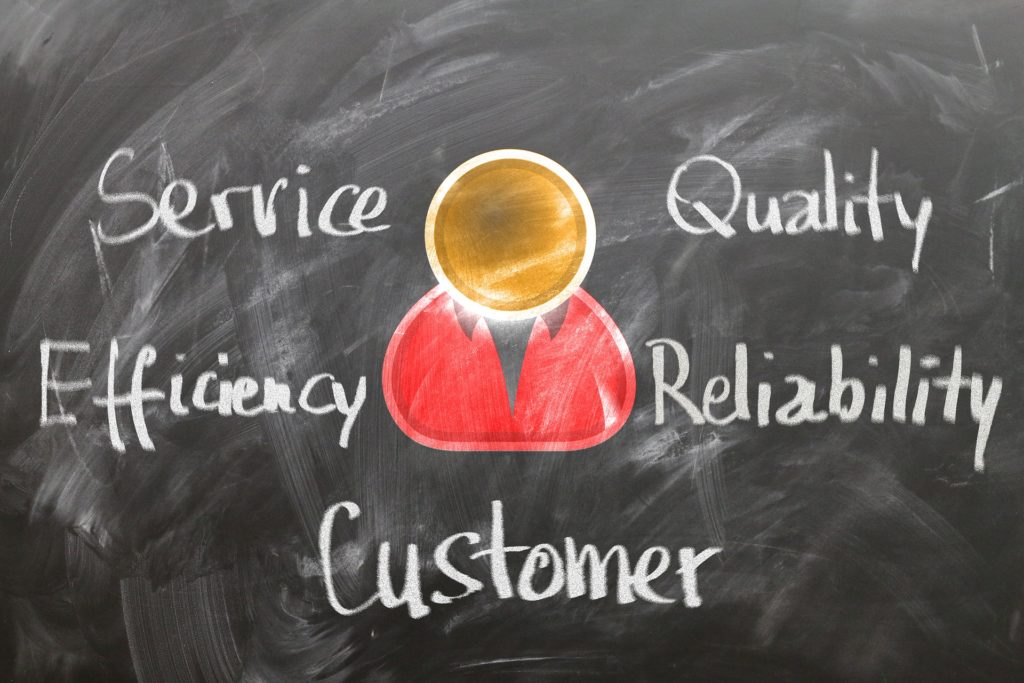If you want customers to sing your praises and stick with you for the long term, then you must figure out how to make their experience the best possible. It doesn’t really matter if you run a tech business or a small food cart at the local mall — the strategies are similar. Of course, there are some special considerations tech companies need to take into account, but the overreaching idea of creating an amazing experience remains the same.
A recent survey of business owners found that about 75 percent of companies plan to increase investments in customer experience technology.
Tech businesses fall into many different categories. You might offer offline help to local companies, such as IT services or computer repair. On the other hand, you might sell software exclusively online. Here are nine customer strategies your tech enterprise should implement if you want to keep and gain customers.
1. Lay Out a Clear Vision
Before you can improve your customer experience, you need to have a vision for what it looks like. The overall experience begins with the first interaction between you and the buyer. This might be through your website, at a trade show or even on social media. Think about the most common places customers are first introduced to your brand and how you can make the interaction positive.
Then, walk through the buyer’s journey from that first introduction to the final sale and beyond. Figure out how you can reinforce your brand’s values through each phase and meet the customer’s needs.
2. Add Live Chat to Your Website
The majority of people state they’re more likely to return if a site offers a live chat option. Adding live chat shows people you care about their experience, but it might go even deeper for younger generations. Some groups of customers prefer not talking on the phone and instead like instant responses online. Live chat gives you the opportunity to reach those buyers and improve their experience. Just make sure your live chat is staffed with fully trained agents who understand the impression you want customers to have of your brand.
3. Amazon-ize the Experience
Amazon is one of the biggest online retailers in the world, so it’s an easy case study for what other online businesses should do. Parts of Amazon’s business are tech-related, such as its cloud computing and e-book publishing platforms, so tech businesses can learn a lot from the way it does things. Provide easy self-service through an extensive and intuitive search feature. However, also offer human interaction when the self-help portion of your model fails.
4. Be Human
Put the needs of your customers ahead of your own whenever possible. One example of this comes from a story about Zappos shoes and how far it went to help a customer. The client was late returning a pair of shoes because her mother passed away. Instead of sticking strictly to policies, Zappos was understanding of the circumstances and not only covered the cost of return shipping, but also sent her flowers. This kind of attitude is likely the reason 75 percent of its customers are repeat buyers.
5. Connect on an Emotional Level
Some brands seem to understand what their customers need. Connecting on an emotional level isn’t easy, but it can help seal a relationship with your clients. First, you have to understand who they are and why they buy your product or service. If you sell software to other businesses, then you are solving some problem or saving them time, or they wouldn’t spend the money. Figure out what that need is and how it taps into the emotions, and you have marketing gold.
6. Use Technology Yourself
Use technology from other tech companies to improve your service to customers. Customer relationship management (CRM) software is a great start because it allows tracking of buying behavior. You can run reports and figure out the needs of your clients before they even realize what they are. This enables you to develop new products or reach out with fresh solutions. Of course, there are dozens of types of software you can use to free up your time and create a better CX, such as using project management software to improve delivery or automate communications.
7. Act on Customer Feedback
Pay attention to the feedback customers give you. For every complaint you receive, there are likely others who have experienced the same problem and not bothered to report it. Fix any bugs immediately and inform the public of the improvement. If someone does complain, go out of your way to make things right. Remember the Zappos example and go above and beyond for each person. The positive word-of-mouth advertising you gain from making the extra effort will eventually bring you new customers.
8. Encourage Employee Feedback
In some cases, your employees are also your customers. If so, ask them for feedback about what they love and hate about your product or service. You can make this process anonymous if you want truly honest comments. If your employees don’t personally buy from your company, enlist their help in testing your product. You may want to allow a few hours a week where they can get into a demo of the item and see what works and what doesn’t.
Ask for feedback and use it to continuously improve customer experience. You should also test the website and ordering systems during this time to see where you might make improvements.
9. Survey Touchpoints and Interactions
Spend time examining every touchpoint and interaction between you and potential buyers. Start by looking at impressions potential leads have on your website, at trade shows, in your neighborhood and on social media. Anywhere someone might come across your brand should be improved upon.
Next, look at the interactions. When a person clicks on a link, what happens? Can it be improved? When they talk to your trade show booth rep, is that person highly trained? What is the follow-up? Think through each step of the journey, from introduction to your brand to making a purchase, and improve every little detail possible.
Adopt a Customer-First Attitude
Today’s customers expect a better experience than ever before. Figuring out the logistics of a good experience aren’t that complicated, but the intricacies of keeping multiple people happy are difficult. Adopt a customer-first attitude so your employees always strive to make things better for those who make a purchase. Your company will thrive, and your CX will improve.
- How to Improve Your Tech Sales in Q1 2021 - December 15, 2020
- Cryptocurrency’s Huge Impact on Businesses in 2021 - November 12, 2020
- How Your Tech Business Should Handle Big Data - October 8, 2020



